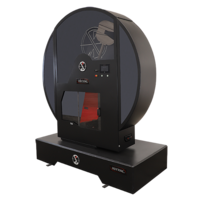
Photo from wikipedia
Abstract The response of thin slabs of Slurry-Infiltrated Fibrous Concrete (SIFCON) with and without reinforcement under low velocity impacts is explored via drop-hammer impact experiments. For comparison purpose, plain cement… Click to show full abstract
Abstract The response of thin slabs of Slurry-Infiltrated Fibrous Concrete (SIFCON) with and without reinforcement under low velocity impacts is explored via drop-hammer impact experiments. For comparison purpose, plain cement concrete (PCC) and reinforced cement concrete (RCC) slabs were also cast and tested. To produce SIFCON slabs made with binary cementitious materials, the pre-determined concrete mixtures were designed with 15% of silica fume, 30% of blast furnace as a partial substitute of cement along with a constant 10% of hooked end steel fibres by volume fraction. The replication of a low-velocity impact on slab was achieved by dropping a steel ball (weighing 4.5 kg), with fall height of 457 mm, via the utilization of a self-fabricated drop-hammer impact test device. The parameters like first crack and ultimate failure energy absorption capacity, ultimate crack resistance, crack resistance ratio, ductility indices, and failure pattern were examined. The test results reported that the incorporation of binary blends of silica fume and slag in SIFCON matrix shows better performance in terms of strength and durability characteristics.
Journal Title: Construction and Building Materials
Year Published: 2018
Link to full text (if available)
Share on Social Media: Sign Up to like & get
recommendations!